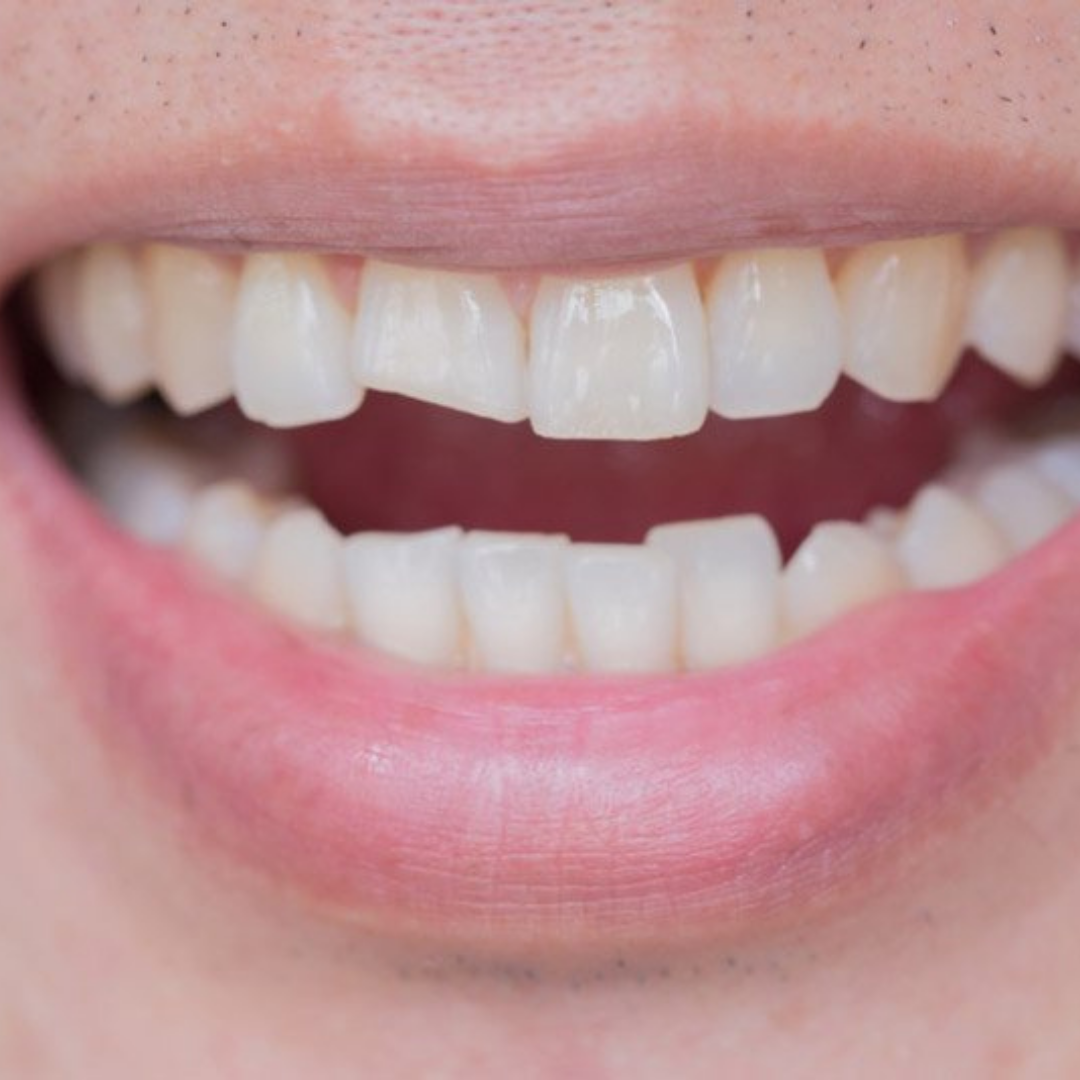If you’re reading this, it’s likely that you bit into something too hard, received blunt-force trauma to your mouth, or have a habit of grinding and clenching your teeth — and now you’re seeking ways to repair your resulting chipped tooth.
The good news is that you’re in the right place. The first step is to determine the size of the chip, which will influence your treatment options. Small chips obviously take less time to repair than larger ones, which could require more involved procedures.
1. Small Chips
Small chips are usually superficial (meaning that no damage has been done past your enamel) and barely visible, but feel rough against your tongue.
Treatment: Enamel Plasty
A popular repair option for small chips like these is enamel plasty. This is when the rough area where the chip occurred is smoothed out with a small buffing tool.
Enamel plasty is a quick and safe procedure that usually requires very little shaping. Sometimes neighboring teeth may be shaped slightly to make sure that your smile remains uniform and proportionate.
2. Medium Chips
Your chip is considered medium-sized if the damage is more than just a sliver, but at least half of your tooth is still intact.
Treatment: Bonding
Local anesthesia or another numbing option may or may not be used depending on your comfort level and the size of the chip. Your tooth will then be contoured and shaped before cleaning solutions or other medications are placed on the surface to help the bonding stick better. The tooth-colored composite filling material is then shaped over the chipped area to reconstruct the damaged tooth.
Following reconstruction, a special curing light is applied to harden the material and “bond” it to your tooth permanently.
If your bonding detaches and falls off from time to time because of its size, location, or any other factors such as chewing a certain way or consuming specific foods, it may be time to reevaluate this solution and treat your chip as a large chip, instead.
3. Large Chips
A chip is considered to be large when more than 50% of your tooth has been damaged.
Treatment: Dental Crowns
Dental crowns are hard, protective caps that fit over your teeth. They’re made from highly durable materials that can last for years, and are custom-made to fit the size, shape, and shade of your natural teeth.
Getting a crown is a multi-step process that typically requires two or more trips to the dentist’s office. Digital scans of the damaged tooth are taken to a lab that will produce the permanent crown. In the meantime, a temporary crown is placed in the mouth for two weeks until the permanent one is ready.
Once the permanent crown is ready, you’ll go back in to have it adjusted to the perfect fit and cemented in place.
Whether your chip is small or large, it’s important to take immediate action to fix it — not only to maintain the integrity of your tooth and oral health, but also to ensure that you can keep feeling confident about your smile. Fill out our appointment request form or give us a call at 410-431-1768.


